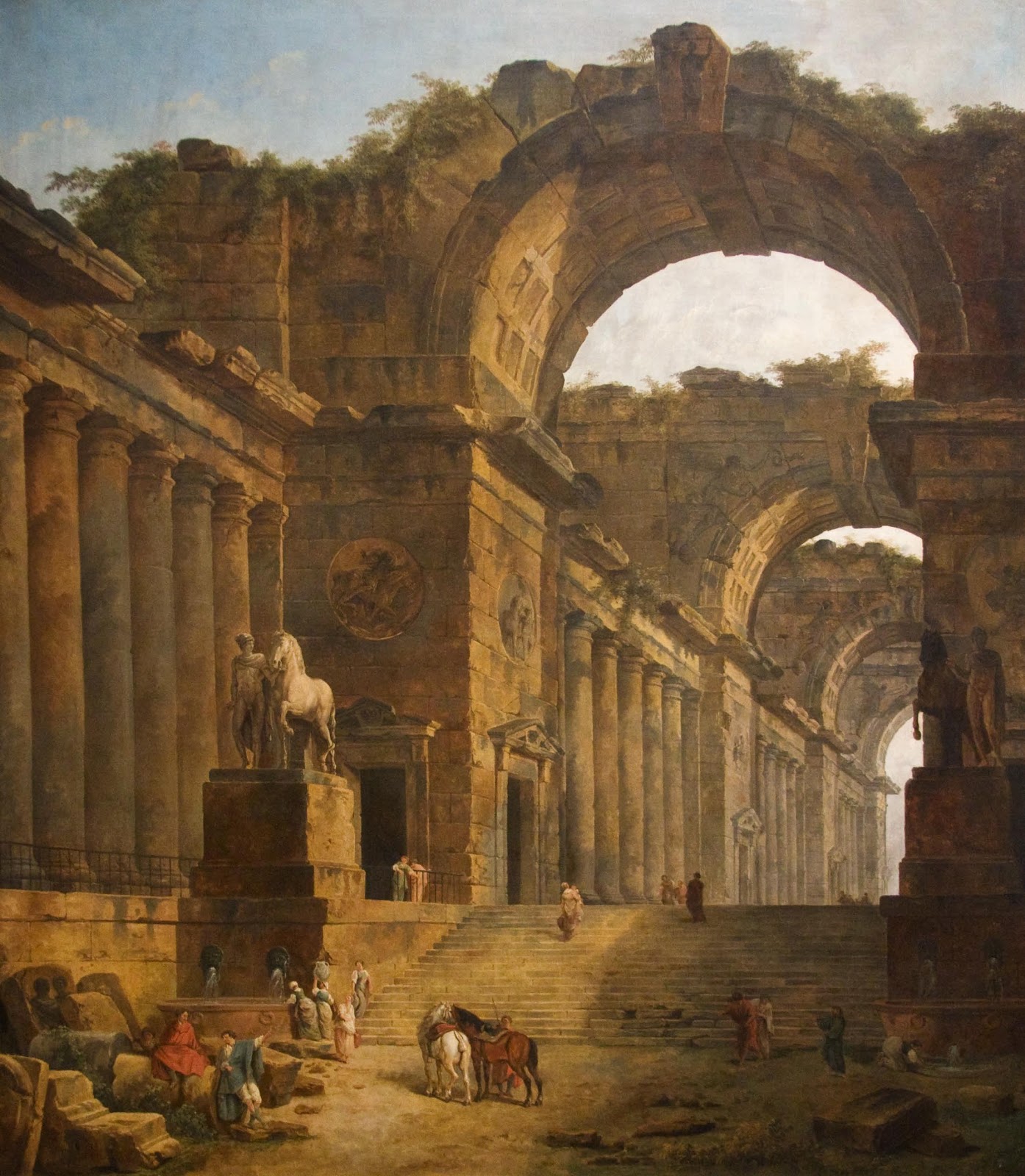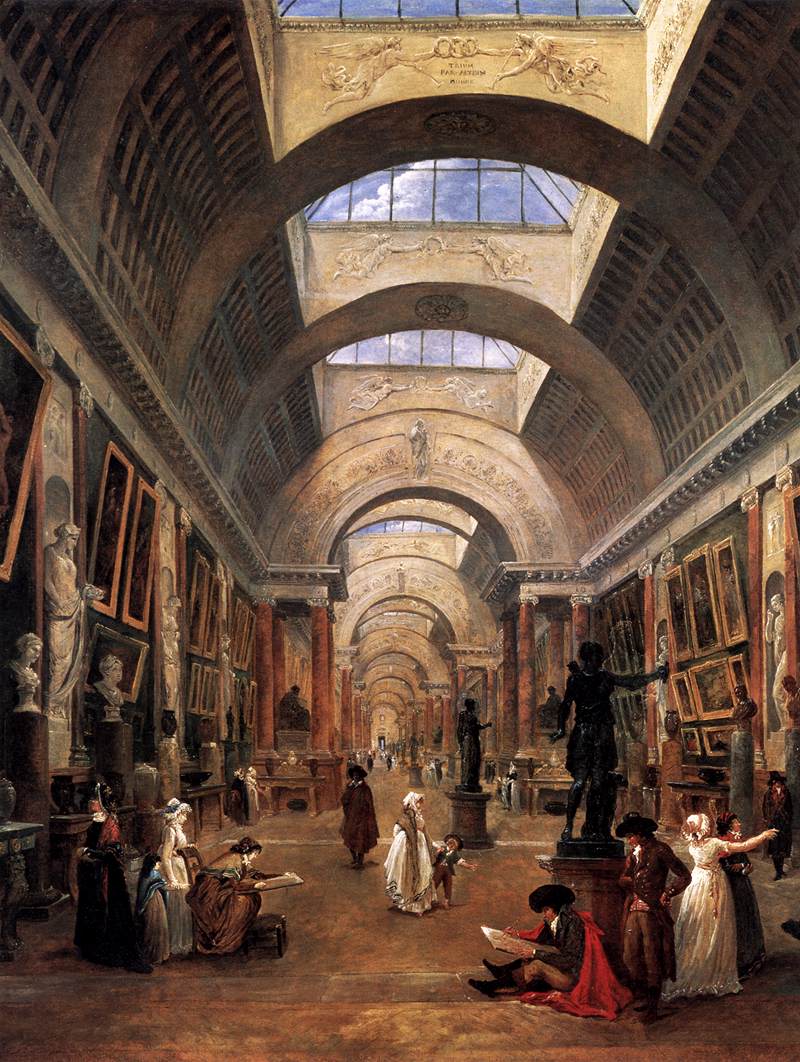Hubert Robert, (born May 22, 1733, Paris, France - died April 15, 1808, Paris), French🎨 landscape painter sometimes called Robert des Ruines because of his many romantic representations of Roman ruins set in idealized surroundings.
Robert left Paris for Rome in 1754 and studied at the French Academy there.
He also met the French painter Jean-Honoré Fragonard in Rome, and in 1760 they traveled together with the Abbé de Saint-Non through southern Italy on a drawing expedition.
Robert developed a strong fascination with architecture and ruins, and he was strongly influenced by Giovanni Battista Piranesi, the renowned etcher of architectural subjects who was then publishing his great collections of etchings of Roman architecture.
Among Robert’s best-known works from his Roman period is a series of red chalk drawings of the gardens at the Villa d’Este, that feature the garden’s dilapidated Classical-style architecture set in an overgrown landscape and animated with small human figures.









